#henry pitz
Text

"I want to battle for the right"
Illustration by Henry Pitz 1923
#henry pitz#art#illustration#knight#knights#chivalry#medieval#middle ages#europe#european#history#armour#crusader#crusaders#crusades#horses#horse#sword#swords
2K notes
·
View notes
Text










Henry Clarence Pitz (1895-1976)
6 notes
·
View notes
Text
Just added to the Vintage shop!
~ "Adventure Rare and Magical" (1965)
#Adventure Rare and Magical#Henry Pitz#Henry C Pitz#Vintage Children's Books#Children's Books#VintageCDChyld#Vintage Books#Vintage Book Seller#Books for sale#Vintage Etsy#Vintage Etsy Seller#Etsy Seller#Vintage#Etsy#Books Books Books
0 notes
Text






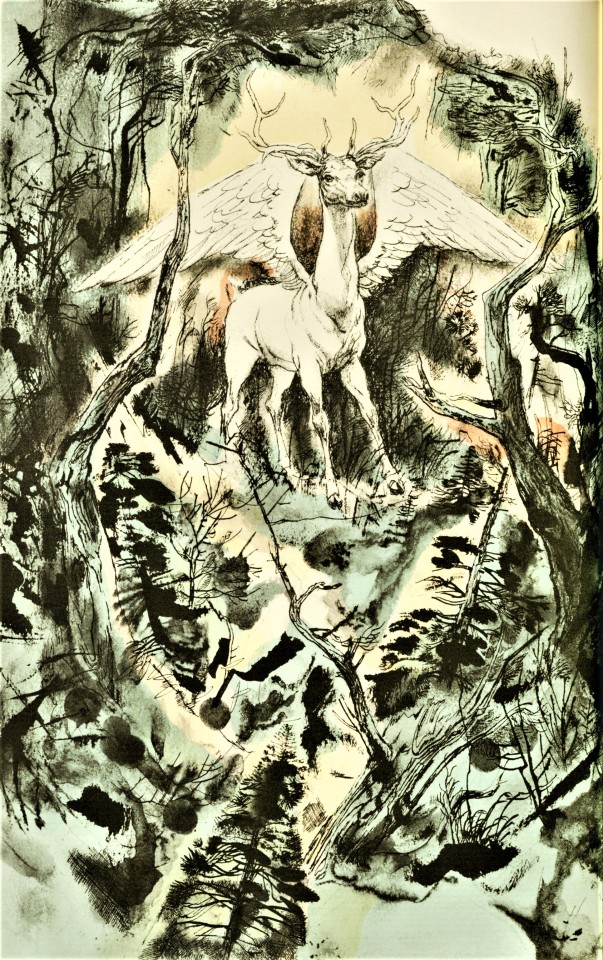
Staff Pick of the Week
The Hundred Year’s War is a slight misnomer; it was actually a series of multiple wars occurring between the years 1138 and 1450 with an occasional peace treaty in between periods of intense battles. Contemporary accounts of the events happening during these years are essential for historians to gain a better understanding of the time period, even if they are exaggerated or clearly biased recordings of the events at hand. One of the many historical accounts from this time is that of Frenchman Sir John Froissart. While not born into nobility, Froissart spent much time surrounded by nobles as he chronicled the happenings of the first half of the War, and his Chronicles are a vital resource for historians about that time. He also wrote a variety of poetry and even an Arthurian Romance, along with his historical accounts.
Today’s Staff Pick of the Week is an edited version of the English translation of The Chronicles of Froissart by John Bourchier, Lord Berners (1467-1533), edited by the English classical scholar G. C. Macaulay (1852-1915). John Bourchier was an English translator, as well as a soldier and statesman. His translation of the book was said to have made a significant advancement in English historical accounts and made the book accessible to a much wider audience than simply those educated to read and understand French.
The edition shown here is the 1959 Limited Editions Club (LEC) production of Froissart's Chronicles, printed by Peter Beilenson (1905-1962) of the Peter Pauper Press, with illustrations by American artist Henry C. Pitz (1895-1976), in an edition of 1500 copies signed by the illustrator. Pitz's marginalia illustrations appear to emulate those of medieval illuminated manuscripts. There are a wide variety of people depicted in clothing of the time of the Hundred Year’s War, as well as shields, weapons, animals, and buildings which are most likely meant to add a visual link to the time in which this account was originally recorded and published. Besides these marginalia, there are 16 full page-spread illustrations reproduced from Pitz's line-and-wash paintings, hand-colored through stencils at the Walter Fischer Studio.
– Sarah S., Special Collections Graduate Intern.
View more Staff Picks.
#staff pick of the week#Jean Froissart#john froissart#Henry C. Pitz#john bourchier#G. C. Macaulay#gc macaulay#chronicles of froissart#limited editions club#LEC#Peter Beilenson#Walter Fischer Studio#marginalia#hand colored prints#illustrated books#hundred years war#The Chronicles of England France Spain and Other Places Adjoining#Sarah S.
30 notes
·
View notes
Note
What are your other art thesis books?

ways of seeing (1972) and then also portraits (2017) which is an edited collection of essays about art by john berger
the art spirit (1923) by robert henri
the story of art (1950) by e.h. gombrich
theories of modern art (1968) by herschel b. chipp
the obstacle race (1979) by germaine greer
death and resurrection in art (2009) trans. by anthony shugaar / published by the j paul getty museum
symbolism (cant find a publishing year but it was thru taschen, sorry) by norbert wolf
know thyself (2018) by ingrid rossellini
200 years of american illustration (1977) by henry clarence pitz
the letters of vincent van gogh (1997) thru penguin classics
strapless (2004) by deborah davis
by her hand (2021) by babette bohn
11 notes
·
View notes
Photo

"Thord Foretooth" by Henry Pitz via ImaginaryArchers
62 notes
·
View notes
Text
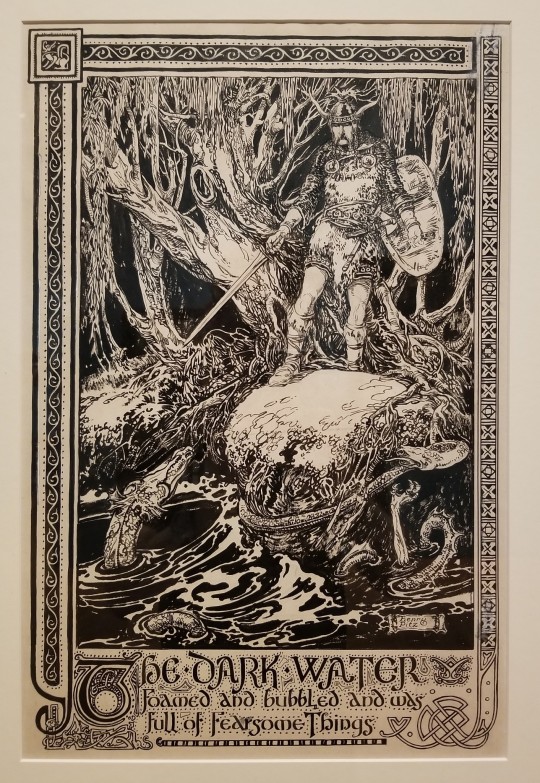
Dark Water, c. 1920
Henry Clarence Pitz
14 notes
·
View notes
Text
Henry C. Pitz, “John Wesley Powell and Party in the Grand Canyon”, 1869 (?)

1 note
·
View note
Text
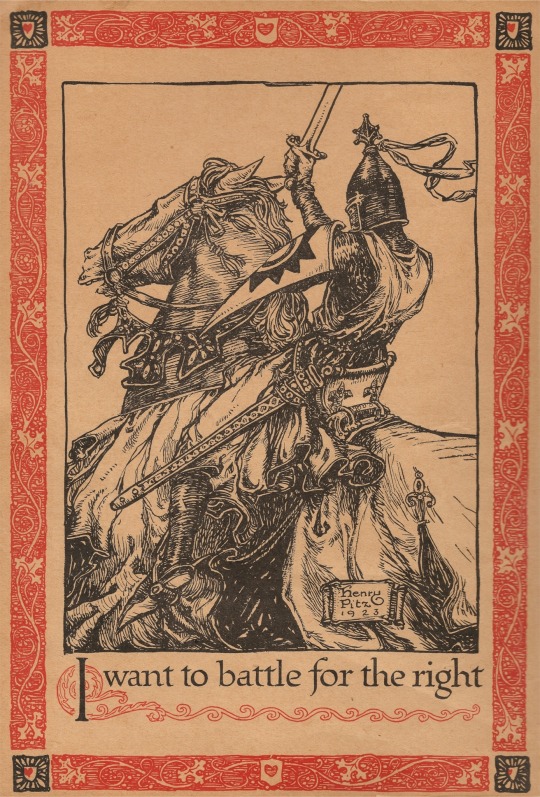
"I want to battle for the right"
Illustration by Henry Pitz 1923
0 notes
Text
Monday 1 July 1833
9 50
2 5
had π- for ten minutes before five to getting up slept and talked lastly no grubbling she seems determined to get me back again but tho’ I say nothing particularly against it yet I say nothing for it or that can at all commit me – fine morning F65° at 10 ½ a.m. – breakfast at 11 – Mr L went off at 5 meaning to look at horses a pair of carriage at Lichfield - after breakfast read chiefly aloud from page 87 to 295 end of volume 2 ‘The Tyrol; with a glance at Bavaria. By Henry D. Inglis, author of ‘Spain in 1830’ etc. In 2 vols. London Whittaker, Treacher, and co. 1833’ vol. 1 pp. vol. 2 pp. 295. post 8vo. – Printed by p. Payn and co.
‘the most sublime sources are those which belong to the smaller rivers. Of these, I may mention the Soane [Saône], the Gave, and the Sourgue [Sorgue] – the 2 latter especially the Gave rises in the magnificent amphitheatre of Marboré; and the Sourgue [Sorgue] bursts at once, an imposing torrent, from the immortal fountain of Vaucluse’ ii. 58/295.
western? ‘From Meran [Merano] to Glurns [Glorenza] thence by a path up the valley (underneath the chain of mountains that form the Eastern boundary of the Tyrol, and which separate it from Switzerland, to the military road (p. 245) which passes the Ortler-Pitz [Ortlersptiz]: but the mountain across which (p. 249) the road is actually conducted, is called Monte-Selvio [Stelvio] (p.250). several miles before reaching the summit of the passage, the road is defended from falling avalanches, by a wooden fabric of great strength at least 1 ½ mile long -...............It is the highest mountain pass in Europe, being 9100ft. above the Mediterranean, constructed that the Austrians might throw troops into the Italian possessions without passing thro’ any territories but their own (p. 251) – Looking from the summit of the pass towards the Tyrol, the Ortler-Pitz [Ortlerspitz] and its glacier are visible, the latter however less strikingly so than from a lower elevation – the round summit of the Ortler-Pitz [Ortlerspitz] is opposite, more remarkable for its great elevation than for its form. the 3rd highest mountain in Europe being 14800, or 14500ft. exceeding only by Mont Blanc and Monte Rosa – 1st ascended in 1804 a reward being offered by the Archduke John to whomsoever should attain its summit – and Pichler a hunter of the Passeyer valley did it on the 27th September – 252-253/295 vol. ii. – Mr. Lawton back at – went out with M- and little M- about 4 ½ - sometime at Ebers’ the bookseller taking shelter against a heavy shower of hail and rain – called and sat sometime at the Sympsons’ - home at 5 55 – dinner at 6 5 – coffee at 8 – tea at 9- Mr L- complained of headache – not well - π-‘s cousin came this morning she seems to count upon getting me back again to her but I say nothing to commit myself but joke her about Willoughby C. came to my room at 10 ¼ - M- merely staid a few minutes- 3 or 4 showers during the day and 2 flash of lightening and 1 peal of thunder while we were out - looking over written box etc settling accounts and writing the above of today till 12 50 F67° now at 12 50 tonight- busy over 1 thing or other till 1 55.
0 notes
Text
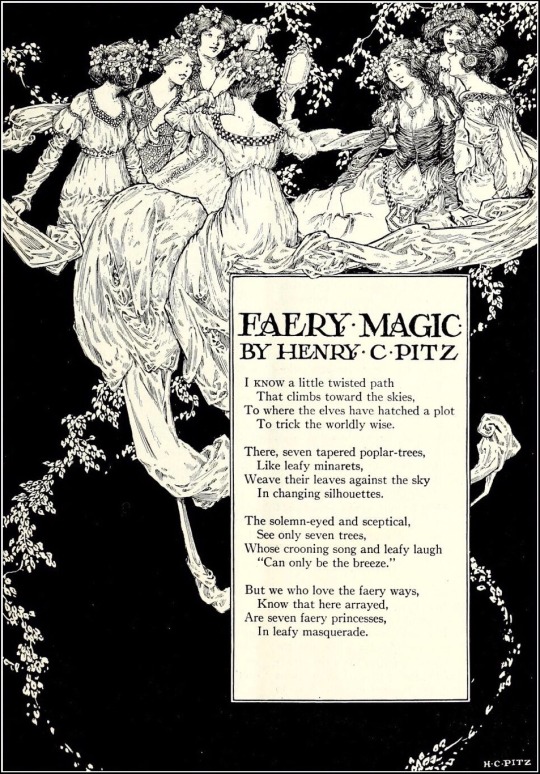
Fairy Magic by Henry C. Pitz
643 notes
·
View notes
Text

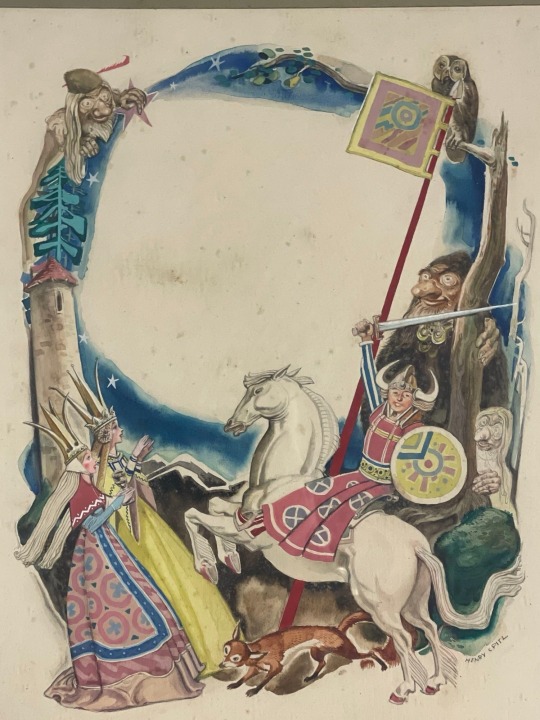
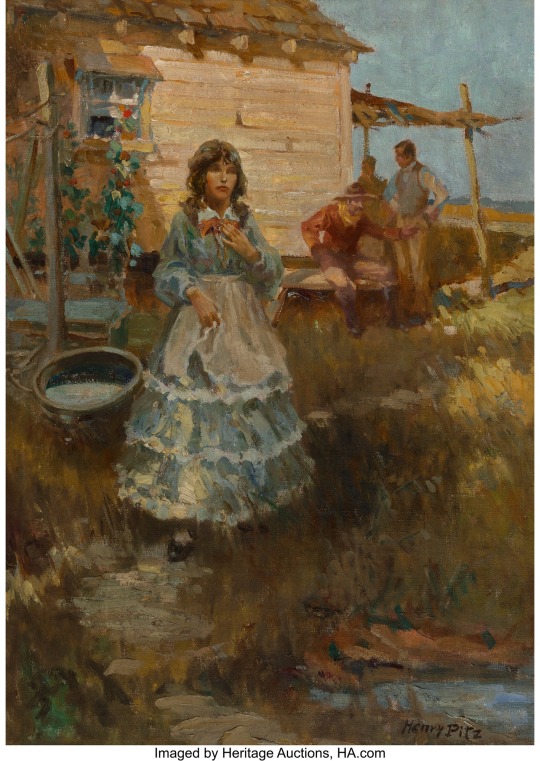
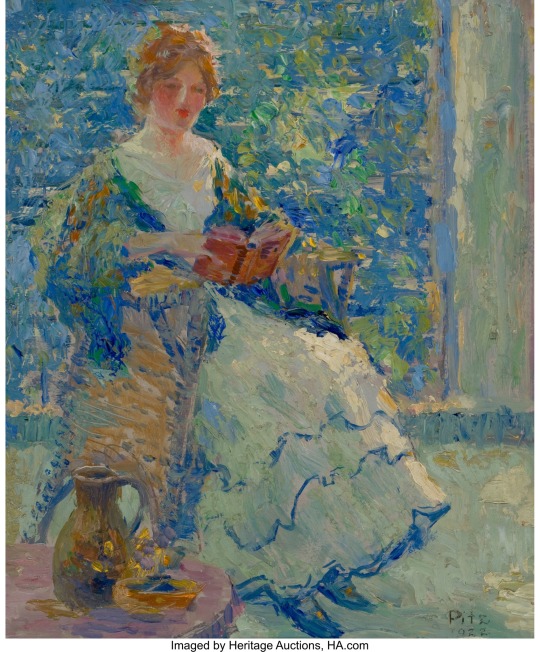
More Henry Clarence Pitz (1895-1976)
3 notes
·
View notes
Note
oh hey, I am super interested in hearing more about the differences you found in the original and reprint of Enemy Brothers! (shoutout to all who love this obscure book)
Oh yes, of course! If I recall correctly, you had asked me about any variants years ago when I had ILLed the book and been sent a 1943 edition, but I didn’t have access to the revised edition at the time. So, a very late answer.
Enemy Brothers first appeared as a serial in a magazine called Classmate,starting on November 14, 1943 and continuing through an unknown date. Unfortunately, this is not something I am able to ILL. It apparently included illustrations by Henry Pitz (a few of which appear in the published book), and the text doesn’t seem to have been entirely identical to the book’s. Evidently the book had to be cut to some extent and the illustrations mostly omitted because of paper shortages during the war. The publisher made these cuts, not Savery. She did make her own revisions for a possible British edition, which was never published. So I regret with my current resources I cannot make a complete study of textual variants of this book.
The following is a comparison between the 1943 edition from Longmans, Green and Co.and the 2001 revised edition from Bethlehem Books, which appeared several years after Savery’s death and presumably did not make the revisions in conjunction with her. I will give the 1943 text first, and then the 2001 text, each with its page number.
There aren’t a lot of changes made, unless I missed a few, which is by no means impossible.
“written beneath in a woman’s stiff foreign hand” (2) / “written beneath in a woman’s upright foreign hand” (2)
“I wonder what they’ve made of you” (2) / “I wonder what you’ve become” (2)
“A few months before your father’s death” (12) / “A little while before your father’s death” (11)
“German training is nothing if not thorough” (18) / “That training has been nothing if not thorough” (16)
“Not the Norwegian house you’ve been lively in lately” (23) / “Not the Norwegian house you’ve been living in” (20)
“a halma set” (106) / “a halma set, similar to ‘chinese checkers’” (96)
“Like the Germans in Poland” (118) / “Like the Nazi’s [sic] in Poland” (106)
“I wonder whether you’d go on thinking Germany had the right to decide where you should live if you happened to be one of the wretches she decided for” (119) / “I wonder whether you’d go on thinking the Fürher [sic] had the right to decide where you should live if you happened to be one of the wretches he decided for” (107)
“He was being slowly poisoned in Germany” (133) / “He was being slowly poisoned” (120)
“Max, don’t be an ass” (217) / “Max, don’t be an idiot” (198)
1-2,4, and 7-9 all seem to be intended to soften what could be interpreted as anti-German (as distinct from anti-Nazi) sentiment from the British characters. I’m not sure why 3 was changed; the best reason I can think of for altering it would be to correct a timeline consistency, but as far as I know, there isn’t one? 5 might be changed for its unfamiliar usage, or else to make the Captain sound less overtly critical of Tony’s behavior (“house you’ve been lively in” implies mischief going on, “house you’ve been living in” is more neutral). 6 and 10 have been altered for the sake of twenty-first-century American readers, who would likely be confused by the former and apply a more risqué definition to the latter.
Bonus: pictures of the 1943 first edition.

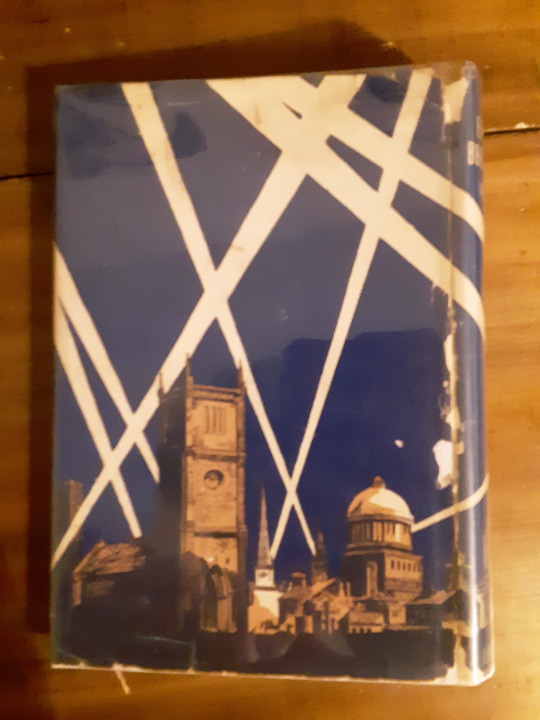
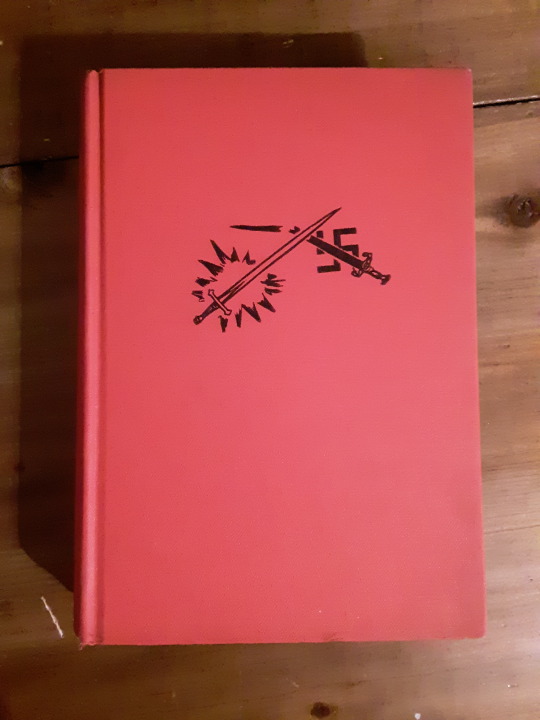

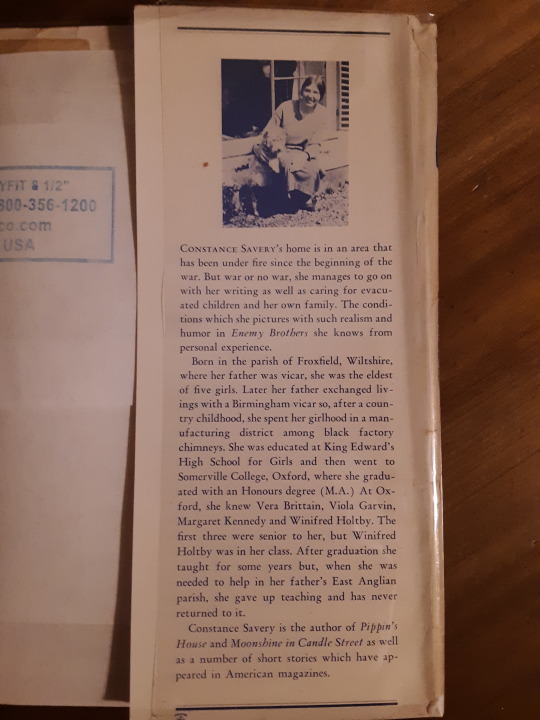
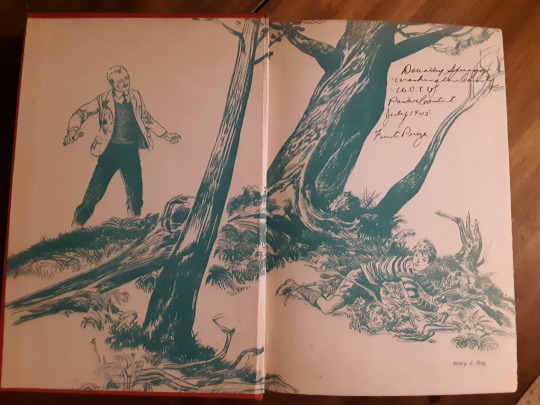



#asks#chasingmyhat#Enemy Brothers#Constance Savery#Henry Pitz#one day I will get my hands on the serialization and it will be wonderful
11 notes
·
View notes
Photo

Henry Pitz (American, 1895-1976), Back Stage, c.1955. Oil on board, 61 × 45.7 cm
228 notes
·
View notes

